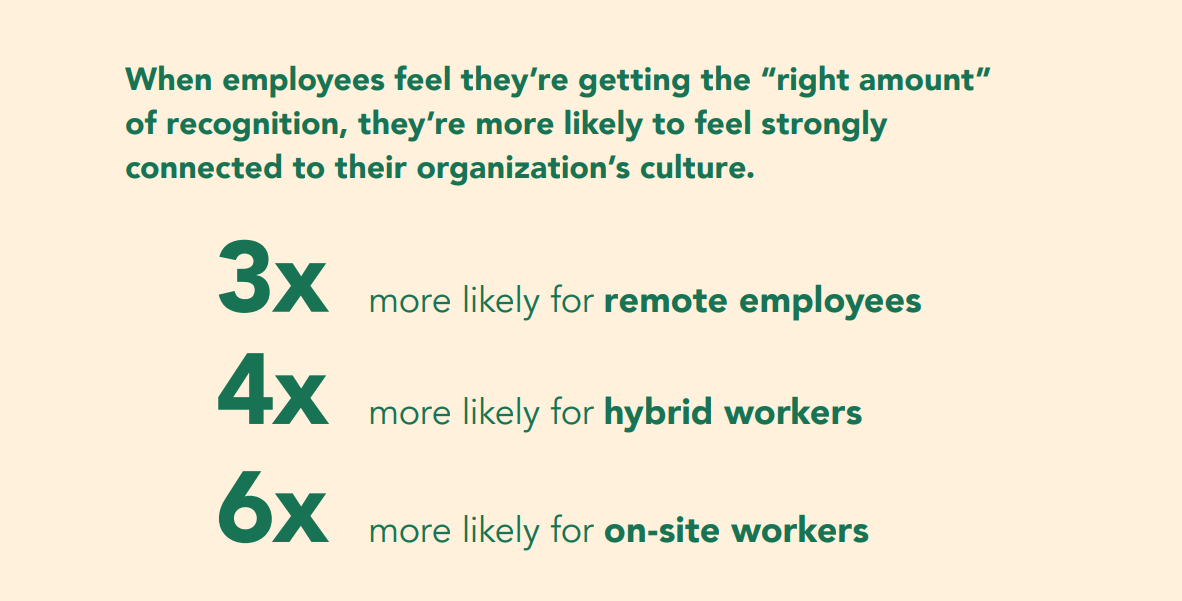Incentive Pay: Definition, Examples, and How to Calculate It

Employee incentives can be a hot discussion topic. What are the best incentives? Do they really work to motivate employees and increase productivity? Can they cause unwelcome competition? How do you know what incentives to offer?
The good news is: that successful incentive programs can look different in every organization. So let's explore what incentive pay is, what it can look like, and how you can implement it for your company.
What is incentive pay?
Incentive pay is merit-based compensation that can be either financial or non-monetary. It is used as a means to encourage employees to perform their best or hit certain goals. It also provides a sense of motivation and can boost morale. Types of incentive pay include year-end bonuses, recognition, profit sharing, gifted experiences, and more.
Casual vs. structured incentives
Performance-based incentives can be distributed in either a casual or a structured manner.
Casual incentives can be handed out at any time to a deserving employee. These kinds of incentives can be highly motivating for exemplary employee performance or can help retain key team leaders. They can include cash bonuses, small gifts, meals, extra time off, or gift cards.
Structured incentives typically follow a specific schedule (annually or quarterly) and often correspond to a certain percentage rate. They include commission and annual bonuses and are usually calculated based on sales or production targets.
Companies don't need to choose between the two. Both structured and casual incentives can coexist – structured rewards can give employees something to work toward while casual ones can help recognize an employee's hard work and bring a sense of delight.
Incentive pay vs. merit pay
Both incentive and merit pay reward employees for their performance and can be motivating compensatory tools. The primary difference is in how they are calculated and distributed. Unlike incentive pay, merit pay is an ongoing, structured type of compensation that is closely tied to employees' wages or salaries. It is completely individual and is usually based on a set of criteria.
Incentive-based pay can be structured similarly, but, as previously mentioned, it can also be distributed more spontaneously. It can be tied to a project, given to a team, and include different types of rewards- including non-monetary ones.
Is incentive pay a bonus?
Yes, incentive pay is a type of bonus, but not all bonuses are incentive pay. Non-financial incentives are a different type of reward that aren't money-based, for example. The commission is also a form of incentive pay that is not a bonus.
Both bonuses and incentives are often based on performance, but they don't have to be. Incentives can be given at any time for any reason and may be something employees specifically work toward earning. Here are all the differences between bonuses and incentives:
| Incentive | Bonus |
| Can be distributed at any time and may be pre-determined | Offered after a certain time period or upon completion of a certain task |
| Future-focused in nature | Past-focused in nature |
| Designed to motivate and recognize employees, enhance company loyalty, and boost morale | Designed to reward accomplishments and share company profits with employees |
| Come in many forms, both financial and non-monetary | Usually in cash form based on a percentage |
| Can also be a bonus | Is not an incentive |
What are the advantages of incentive pay?
Support company goals: Incentive pay establishes a link between employee and company interests and encourages employees to work towards these business objectives.
Define business priorities: Incentive structures provide clarity by highlighting key performance indicators and objectives crucial for the business's success.
Empower employees to work their best: Incentives can have a positive impact on productivity by compelling teams to put in their best work in order to earn the rewards.

Reward high achievers: Hard work should be recognized and rewarded. Incentives support a culture of recognition and exceptional performance.
Cultivate a loyal, satisfied workforce: Performance-related pay is positively associated with job satisfaction, organizational commitment, and managerial trust (Ogbonnata et al., 2017).
Encourage teamwork: Peer-to-peer incentives, like social recognition, can be a powerful way not only to foster productivity but also to build a culture of appreciation, which can make employees feel more connected to one another and their organization.
These programs encourage cooperation and improve the spirit of teamwork among your employees. You can easily keep track of the level of engagement through feedback tools like Workhuman Conversations®.
What are the disadvantages of incentive pay?
- Impact on employee behavior: The lure of incentives might lead employees to focus solely on tasks directly linked to rewards, potentially neglecting broader responsibilities.
- Risk of aggressive sales practices: Incentive structures in sales-driven environments could inadvertently encourage aggressive or unhealthy sales practices, compromising ethical considerations for the sake of meeting targets.
- Potential for wage discrimination: If bonuses are solely tied to performance metrics, supervisors' personal relationships and biases could lead to incidental wage discrimination.
- Competition and jealousy: A strong focus on individual performance incentives can lead to tension between employees, fostering jealousy among colleagues and potentially compromising overall morale and productivity.
When should you offer incentive pay to employees?
Simply put, you should consider designing an incentive pay program when it aligns with your organizational strategy. If you believe such an initiative will move your business forward, give it a go!
Remember your rewards should be meaningful and relevant. Don't guess what will motivate employees – ask them directly. Run a survey and have direct discussions to see what will be more effective.
Be sure to follow the SMART structure for your incentive targets:
- Specific
- Measurable
- Achievable
- Realistic
- Time-based
Employees should understand the compensation structure and how it pertains to their work. Lack of transparency could lead to confusion and frustration, reducing buy-in and potentially causing upset among the team.
Finally, ensure that offering casual or structured incentives is financially viable for your company. They are a perk, not a must-have, and shouldn't be implemented at the cost of another crucial part of the business.
What are the different types of incentive payments?
- Awards/rewards-based incentive programs: Employees want to be recognized for their work – in fact, a recent report found around 37% of employees say that recognition is the most important thing to them.
- Remote/hybrid workplace-friendly programs: If you have a hybrid workplace, creating an equitable and exciting culture can be a challenge, but offering cash incentives and non-monetary rewards can help increase employee engagement.
- Referral bonuses: No one is a better advocate for your company than your current employees, so incentivizing referrals can be a great way to attract top talent while supporting your team.
- Profit sharing: This incentive plan is a unique way to align employee's productivity with the company's success.
- Travel incentives: You can offer everything from team retreats and business-related trips to fully paid vacations.
- Fringe benefits: Fringe benefits, also called employee benefits, comprise different types of non-salary compensation and perks. These include paid time off, health insurance, retirement plans, fitness incentives, and more.
- Suggestion incentive: Instead of paying another company to research and strategize new growth ideas, turn to your own employees – they know best, after all!
- Tuition assistance: Support your employees in their pursuit of continuing education.
- Employee stock ownership: Similar to profit-sharing, stock options can encourage employees to work in the business's best interest and can decrease turnover.
- Engagement and teamwork incentives: Want your teams to collaborate more? Reward them for doing so. Feedback tools like Workhuman® Conversations® can play a key role in facilitating collaboration.
- Training and development program incentives: This perk is a win-win for both employees and employers. Employees feel supported in their growth, while employers benefit from their upskilling.
- Gifts and gift cards: Gift cards are a tried-and-true token of appreciation.
- Career development opportunities: When employees believe their company is invested in their long-term success, they are more likely to stick around. Offering career development options can support that.
- Extra vacation days incentive: Time off is good for employees, reducing both stress and burnout. Plus, you'd be hard-pressed to find employees who will turn down extra PTO.
- Flexible working options: Everyone has their own preferences for how and where they want to work. Offer employees the option of flexibility with these unique incentives.
- Company outings: Foster a sense of community with team events, which can be anything from after-work drinks to a weekend offsite.
How is incentive pay calculated?
When creating an incentive pay plan, you'll need to decide how to calculate it. Will it be a certain amount of an employee's salary? If it's a one-off reward, is there a range for the amount or monetary value? Is it based on performance goals? Will you offer individual or group incentives? Are incentives rewarded for a set period or only annually?
Your calculations should be based on both your company's broader goals as well as what motivates your employees. The most effective incentive program will factor in both equally.
Conclusion
Merit-based compensation can be a powerful way to support and encourage your team. While there are certain guidelines you can follow, there is no singular way to offer incentives, which is a good thing!
That means you have the flexibility and creativity to design your incentive program so that it will be the most meaningful and effective for your particular employees. Take care to create a program that encourages collaboration, fosters recognition, and celebrates employees' dedication every step of the way.
About the author
Ryan Stoltz
Ryan is a search marketing manager and content strategist at Workhuman where he writes on the next evolution of the workplace. Outside of the workplace, he's a diehard 49ers fan, comedy junkie, and has trouble avoiding sweets on a nightly basis.